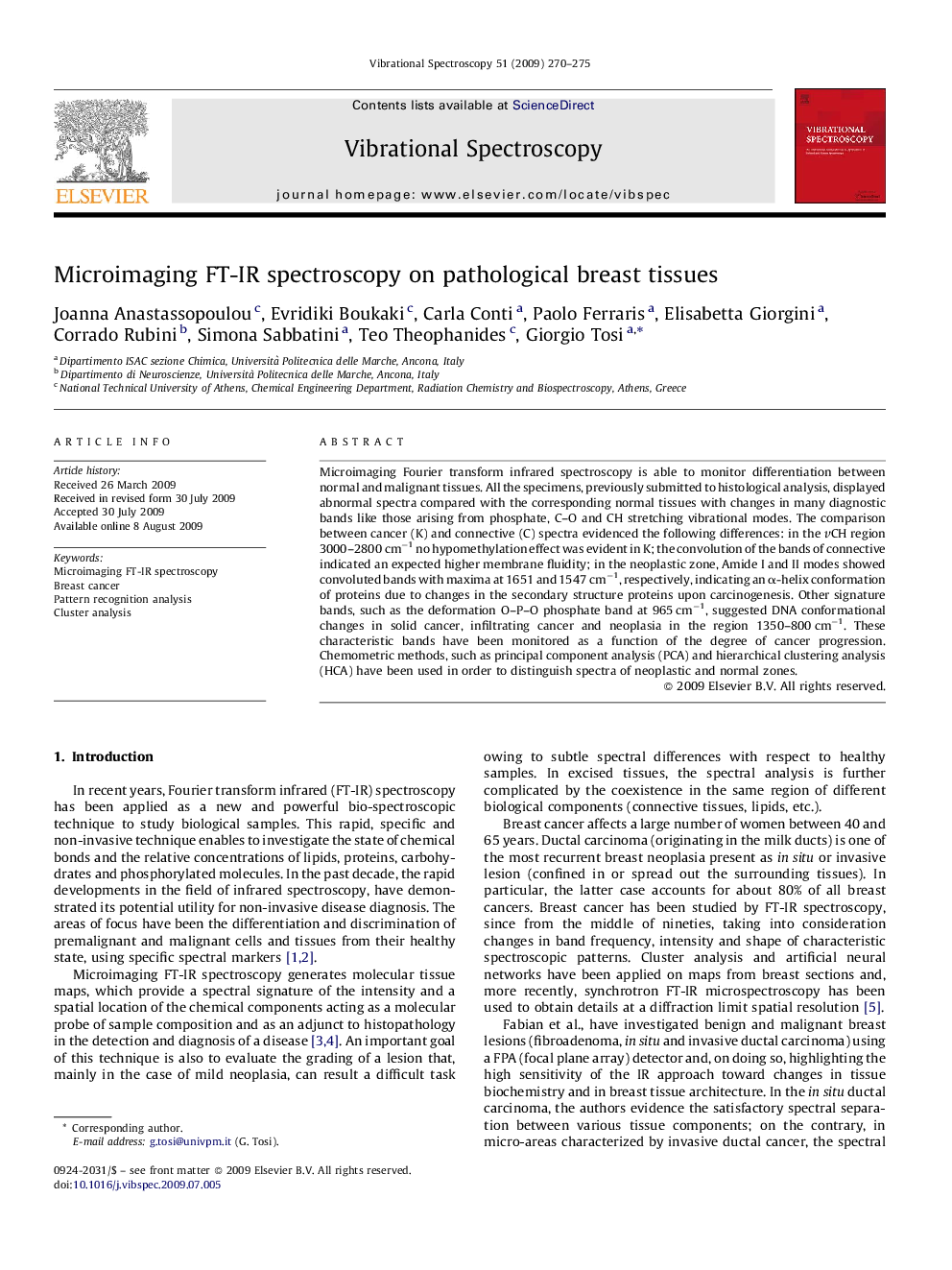| Article ID | Journal | Published Year | Pages | File Type |
|---|---|---|---|---|
| 1250720 | Vibrational Spectroscopy | 2009 | 6 Pages |
Microimaging Fourier transform infrared spectroscopy is able to monitor differentiation between normal and malignant tissues. All the specimens, previously submitted to histological analysis, displayed abnormal spectra compared with the corresponding normal tissues with changes in many diagnostic bands like those arising from phosphate, C–O and CH stretching vibrational modes. The comparison between cancer (K) and connective (C) spectra evidenced the following differences: in the vCH region 3000–2800 cm−1 no hypomethylation effect was evident in K; the convolution of the bands of connective indicated an expected higher membrane fluidity; in the neoplastic zone, Amide I and II modes showed convoluted bands with maxima at 1651 and 1547 cm−1, respectively, indicating an α-helix conformation of proteins due to changes in the secondary structure proteins upon carcinogenesis. Other signature bands, such as the deformation O–P–O phosphate band at 965 cm−1, suggested DNA conformational changes in solid cancer, infiltrating cancer and neoplasia in the region 1350–800 cm−1. These characteristic bands have been monitored as a function of the degree of cancer progression. Chemometric methods, such as principal component analysis (PCA) and hierarchical clustering analysis (HCA) have been used in order to distinguish spectra of neoplastic and normal zones.
